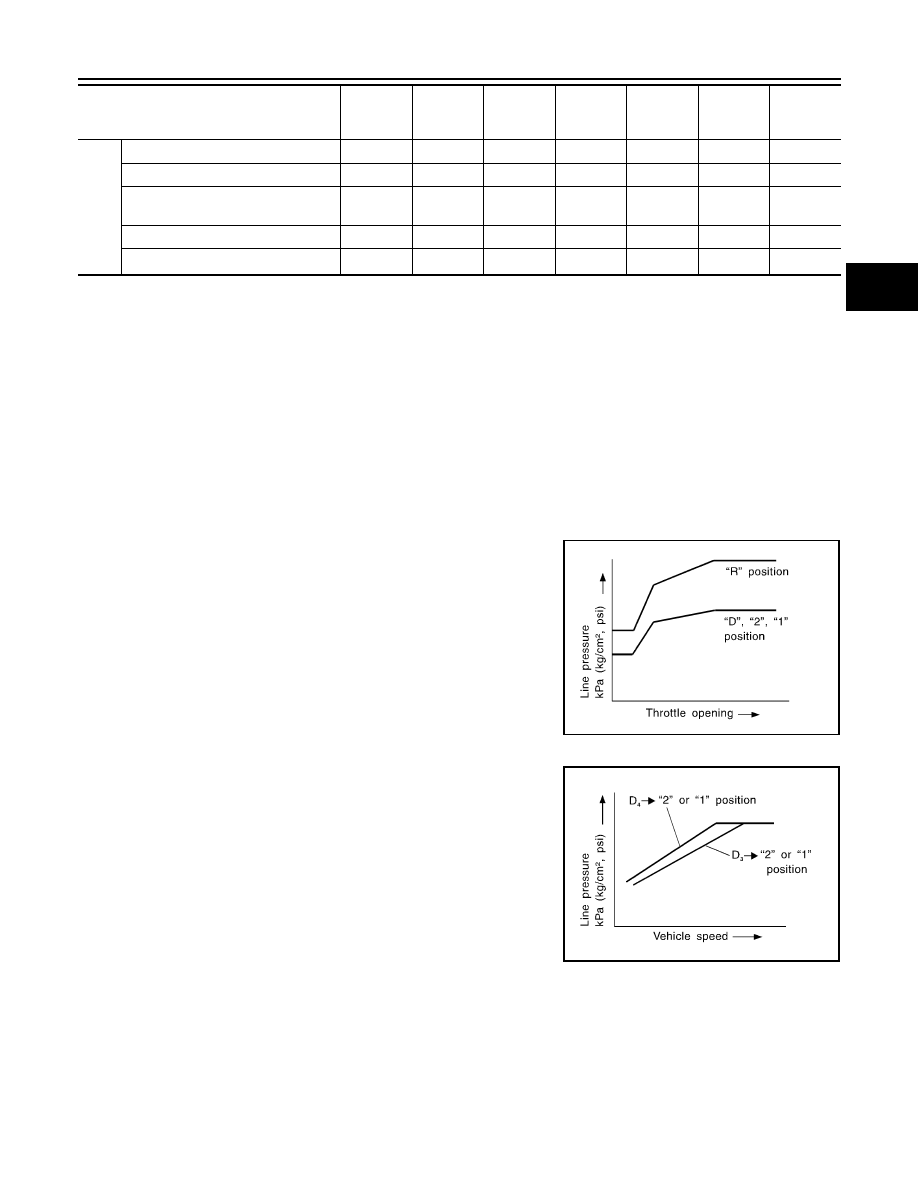содержание .. 1320 1321 1322 1323 ..
Nissan Tiida C11. Manual - part 1322

A/T CONTROL SYSTEM
TM-339
< FUNCTION DIAGNOSIS >
[TYPE 2 (4AT: RE4F03B)]
C
E
F
G
H
I
J
K
L
M
A
B
TM
N
O
P
*1: Spare for vehicle speed sensor·A/T (revolution sensor)
*2: Spare for accelerator pedal position signal
*3: If these input and output signals are different, the TCM triggers the fail-safe function.
*4: Used as a condition for starting self-diagnostics; if self-diagnosis are not started, it is judged that there is some kind of error.
*5: Input by CAN communications.
*6: Output by CAN communications.
Line Pressure Control
INFOID:0000000001714314
• TCM has various line pressure control characteristics to match the driving conditions.
• An ON-OFF duty signal is sent to the line pressure solenoid valve based on TCM characteristics.
• Hydraulic pressure on the clutch and brake is electronically controlled through the line pressure solenoid
valve to accommodate engine torque. This results in smooth shift operation.
NORMAL CONTROL
The characteristic of the line pressure to the throttle opening is set
for suitable clutch operation.
BACK-UP CONTROL (ENGINE BRAKE)
If the selector lever is shifted to “2” position while driving in D
4
or D
3,
great driving force is applied to the clutch inside the transaxle. Clutch
operating pressure (line pressure) must be increased to deal with
this driving force.
DURING SHIFT CHANGE
Out-
put
Shift solenoid valve A/B
X
(*3) X
X
Line pressure solenoid
X
(*3) X
X
Torque converter clutch solenoid
valve
X
(*3) X
X
Overrun clutch solenoid valve
X
X
(*3) X
X
OD OFF indicator lamp
(*6)
X
X
Control item
Line
pressure
control
Vehicle
speed
control
Shift
control
Lock-up
control
Engine
brake
control
Fail-safe
function
Self-diag-
nostics
function
SAT003J
SAT004J